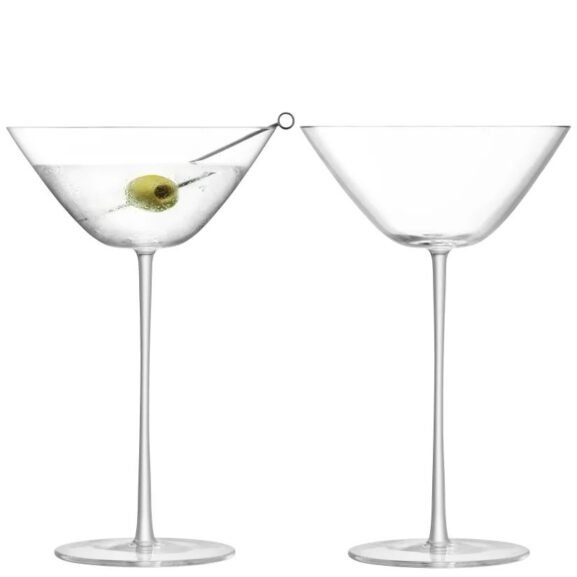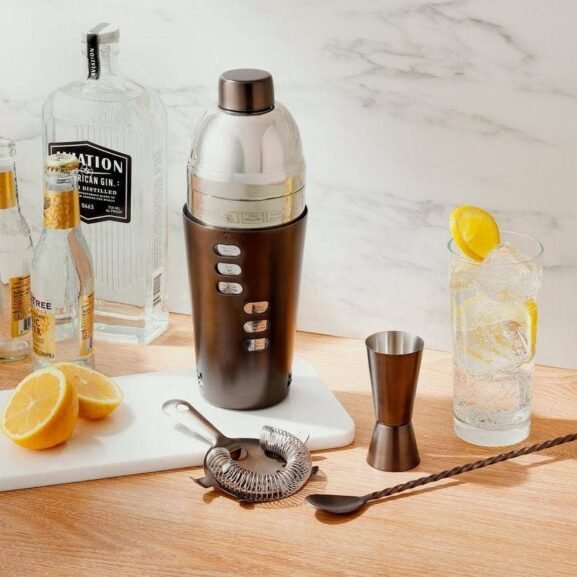The Different Styles of Orange Wine
When you buy something through our link, we may earn a small commission from our affiliate partners. Wine Enthusiast maintains complete editorial independence and all wines are blind tasted. Read more about our policy.
Orange wine seems to be everywhere nowadays. It’s dominating natural wine bars, carving out space on trendy restaurant lists and creeping steadily into more mainstream retailers. While citrus flavors are common in these wines, they aren’t made from oranges, but white grapes fermented on their skins. The process produces orange-hued bottlings with a noted tannic texture.
Skin-contact wine is hardly a new innovation. The technique has a thousand-year-plus history in the nation of Georgia, where grapes are fermented for months underground in earthenware amphorae. The resulting wines, often made from aromatic indigenous varieties like Rkatsiteli, deliver unmistakable tannins and energy, with pronounced flavors of citrus peel and spice.
Some varietals take better to the skin-contact treatment than others. Grapes like Muscat, Riesling, Kerner and Albariño “work better when fermented on the skins than others because of their genetic lineage,” says Wesley Box, owner of Box Wine Company. “This correlates directly to how much phenolic extraction takes place during the fermentation.”
Some producers allow just an overnight on the skins, others a few days. These wines take on some richness, but almost never the deep amber-orange color that marks more heavily contacted wines.
Skin-contact wines of all hues are experiencing a boom in popularity. The recent explosion has led to the style’s application in all sorts of places you’d never expect to find it—especially in California.
Chardonnay
Russian River Valley Chardonnay is a classic California wine with a global following. Lovers of this style of Chard know that it’s generally a rich, opulent version of the variety, with apple and pear flavors and lively balancing acidity.
For that reason, it’s perhaps an odd place to begin a conversation about skin-contact whites. But it’s a passion project at Pellegrini-Olivet Lane Winery, which recently started crafting roughly 200 cases of a Russian River Chardonnay that sees two weeks on the skins. The result is a familiar but surprising wine that offers a dichotomy between expected (apple, pear, cinnamon) and very unexpected (Rainier cherry, orange pith) flavors.
“Skin-contacted Chardonnay shows a little more of those tropical orange-y fruits that are really pretty on the nose,” says Pellegrini-Olivet Lane winemaker Charlie Fauroat. The wine sees more oak than Fauroat’s other bottlings, but the vibrant acid and energy of the wine keeps it from feeling over-oaked.
Interestingly, the wine is having success with the stubborn Anything-But-Chardonnay crew: “It’s turning heads when people may have been turned off to the varietal,” notes General Manager Alexia Pellegrini.
Wine Enthusiast Recommends:
Pinot Gris/Grigio
Pinot Gris is another tremendously popular variety that lends itself beautifully to skin contact. Commonly, the grape can produce light, fresh and low-alcohol wines—similar in style to those produced across Italy, where it’s called Pinot Grigio. Richer, more intense versions can also be produced, with varying levels of residual sugar, in places like Alsace.
Pinot Gris can be fermented on the skins for extended periods, but versions with moderate contact often display beautiful balance. One great example is Darling Wines 2023 La Cruz Pinot Gris from the Petaluma Gap, which sees five days on skins and some stems. Lively citrus fruits and floral notes dance with salty pith and just enough tannin to make things interesting.
Wine Enthusiast Recommends:
Kerner
A cross between Riesling and Trollinger, Kerner grapes traditionally deliver a signature peachy richness and some floral energy. (Pro tip: It’s exactly the type of juice you want with Thai food.) But it’s not especially well known or grown in the United States; mention the white varietal too far from the Alps—or from any tragically hip wine bar, for that matter—and you’ll probably get some confused looks.
In the absence of preconceived notions, why not take advantage? Sommelier-turned-winemaker Wesley Box decided to do just that when he chanced upon quality specimens in Lodi’s Mokelumne River AVA, which are the basis for Box Wine Company’s Hills and Valleys Kerner.
The floral quality of the variety lends itself readily to skin contact, Box believes, layering flavors in a manner he describes as “building the funk.”
For the wine, Box produces equal portions of skin-fermented and barrel-fermented wine, eschewing malolactic fermentation for both. They’re then combined and aged for six months in neutral French barrels. The result is a captivating and mouth-watering expression that screams Kerner with acidic peachy character, while whispering insistently about pomelo pith, crushed ginger and lemon blossom.
In a way, the style sits astride two traditions. Hills and Valleys doesn’t have the extreme crunchy richness of, say, a Gravner Ribolla Gialla, but that’s not the point. Perhaps, as a customer once told Box: “It’s not an orange wine, it’s a gateway drug for orange wine.”
Wine Enthusiast Recommends:
Sauvignon Blanc
Sauvignon Blanc is an exceptionally popular varietal, but it can be divisive. Some folks find these lighter wines to be perfectly refreshing on a hot day, while detractors find the hyper-focused acidity and bright citrus flavors overwhelming.
Enter skin-contacted versions. While it might seem strange to use such a light, bright varietal to make an orange wine, the combination of the grape’s natural citrus flavors and vibrant acidity make it a natural fit for extended maceration.
Flying in the face of the grape’s reputation for quaffable summer sippers, skin-contacted Sauvignon Blanc can be rich and textural, with a pronounced saline and pithy character. The natural acids provide balance, keeping the more decadent and savory flavors from overwhelming the final product.
One captivating example of Sauvignon Blanc with the touch of skin contact is Floréz Wines’ Shangra-Li Savvy B. Winemaker James Jelks lets the grapes sit on the skins overnight, lending the wine a whisper of richness and an edge of saline and lime pith that’s extremely satisfying.
Wine Enthusiast Recommends:
Florez Wines, Shangra-li Savvy-B (2023)
This juicy, acid-driven Sauvignon Blanc is loaded with flavors of tropical fruits, orange blossom, lime leaf, white flowers, and coarse sea salt. Fruit for this organic wine is dry-farmed, destemmed, and left on the skins overnight, followed by lees-aging for six months.
$26.99
Wild Wines
Blends
Blends are all about building complexity, and skin contact can be a useful tool in that department. An excellent example can be found at Sonoma’s Head High Wines, which makes a gently skin-contacted blend of Viognier, Grenache Blanc, Roussanne, Marsanne, Vermentino and Muscat. After seven days on the skins (all except the Viognier, which is blended in after the fact), the resulting wine is citrus-forward and very floral. Complex and compelling, it displays vibrant flavors without going leaning too far into the crunchier aspects that the skin contact can bring.
Interestingly, Head High also makes a non-alcoholic version of the same exact wine, an aromatic expression with floral notes from Viognier and Muscat dominating the conversation. Often, the dealcoholization process strips away a wine’s flavor and complexity, but skin contact is seemingly a way to protect against this.
“[We] wanted to make an N.A. wine that still had some phenolics, some ‘wine-iness’ without adding a bunch of stuff back in,” says Head High co-founder Prema Kerollis. Mission accomplished.
A slightly more heavily skin-contacted blend can be found at Breaking Bread Wines in Healdsburg. The operation’s Marmalade bottling is mostly Muscat sourced from Breaking Bread’s estate vineyard, plus some Sauvignon Blanc for acid balance and Chardonnay for depth. Winemaker Erik Miller gives the grapes a total of ten days on the skins before barrel fermentation, lending the wine a deep orange hue and a rich, broad citrus and spice character that’s plush and viscous.
It’s a wonderful amplification of Muscat’s best qualities. Rich, but not in a way that’s unwieldy. So much of its depth is undeniably because of its orange-ness—without the skin contact, you’d have a very floral summer sipper.
Big picture, orange-ifying whites can produce wines with complexity and depth. To some, it’s enchanting—to others, bewildering. In short, they’re not for everyone. But for those who appreciate the magic that tannins can work, there are few substitutes.
An uninitiated friend of this writer once had this revelation upon sipping a vaguely murky, faintly amber-hued Sauvignon Blanc.
“Tannin in white wine,” he said, with a curious eyebrow arched halfway to the ceiling. “It’s weird, but I think I like it.”
Wine Enthusiast Recommends:
More Orange Wine Coverage

In the Shop
Zalto Denk’Art Balance Glasses Set of 2
In Stock | $160
Published: October 25, 2024

